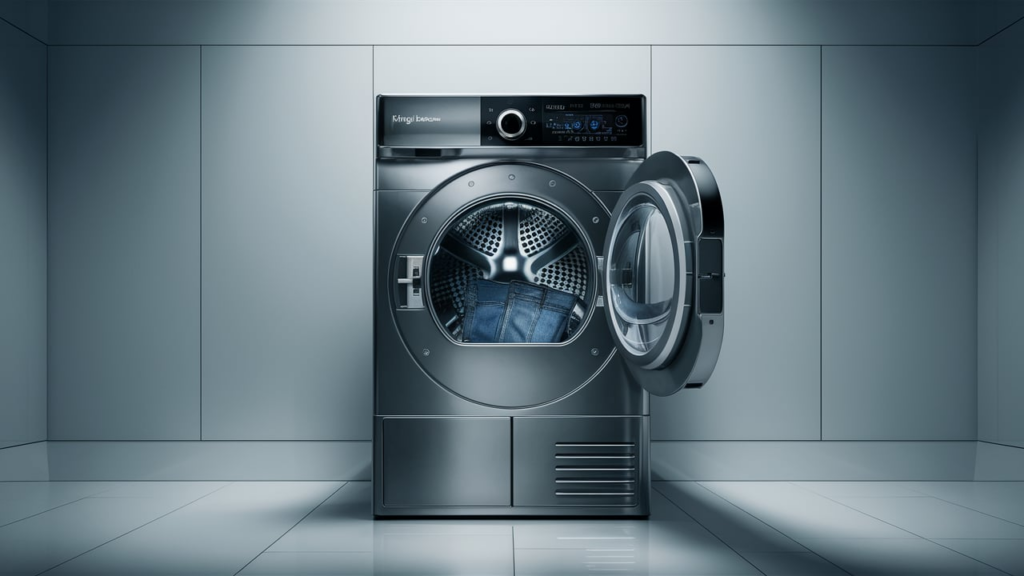
If your Whirlpool dryer is making squeaking or screeching sounds, a warped or bent bulkhead might be the culprit. Fortunately, replacing the bulkhead is a simple task that you can handle yourself, whether you’re experienced in DIY repairs or just starting out. Follow this guide for a smooth and efficient repair.
Identifying Bulkhead Issues
Before replacing the bulkhead, verify that it is the source of the problem. Common signs include:
- Loud squeaking or screeching sounds when the dryer is in use.
- Visible damage or warping of the bulkhead when inspected.
- Uneven or unstable drum movement during operation.
If these symptoms match what you’re experiencing, replacing the bulkhead is likely the solution.
Tools You’ll Need
- 5/16-inch nut driver
- 1/4-inch nut driver
- Putty knife
- Ratchet
- Socket
- Phillips head screwdriver
- Replacement bulkhead (WP8557244)
Safety Guidelines
Prioritize safety during any appliance repair. Use these tips for a safe working environment:
- Disconnect Power: Unplug the dryer or turn off the circuit breaker to prevent electric shock.
- Cool Down the Appliance: Allow the dryer to cool completely before starting work, especially if it was recently in use.
- Work in a Clear, Well-Lit Space: Use a well-lit and clutter-free workspace to improve visibility and accessibility. Keep pets and children away from the area.
- Dry Hands and Work Area: Avoid working with wet hands or in a damp environment to prevent electrical accidents.
- Wear Protective Gear: Use insulated gloves to protect your hands from sharp edges and debris. Consider safety glasses and a dust mask if you’ll be dealing with dust or debris.
- Handle Components Gently: Avoid using excessive force when removing or installing parts to prevent damage.
- Refer to the Manual: Check your dryer’s user manual for specific instructions or precautions related to the bulkhead replacement.
- Avoid Live Voltage Testing: If you’re unfamiliar with safe multimeter use, avoid testing live electrical components to prevent short circuits or shocks.
How to Replace a Whirlpool Dryer Front Bulkhead
Remove the Old Bulkhead
- Insert a putty knife into the corners of the main top to release the spring clips.
- Lift the main top and either lean it back against the wall or secure it with a strap.
- Disconnect the wire harness for the door switch.
- Remove the 5/16-inch screws from the top corners using a nut driver.
- Remove the front panel to expose the bulkhead and duct assembly.
- Disconnect the wiring harness for the sensor bars at the bottom of the bulkhead.
- Remove the 5/16-inch screw from the top of the duct assembly.
- Remove the two Phillips head screws inside the outlet grille.
- Lift out the outlet grille.
- Locate the four 1/4-inch screws securing the bulkhead.
- Remove the two bottom screws completely and loosen the two top screws.
- Lift the bulkhead off the cabinet.
- Use a ratchet and socket to remove the rollers and shafts from the old bulkhead.
Install the New Bulkhead
- Install the rollers and shafts onto the new bulkhead.
- Hang the new bulkhead back onto the cabinet and tighten the top screws.
- Secure the bulkhead with the two bottom screws.
- Reinstall the outlet grille and secure it with the Phillips head screws.
- Reattach the 5/16-inch screws to the lint duct assembly.
- Reconnect the wiring harness for the sensor bars and door switch.
Reassemble the Dryer
- Reinstall the front panel by aligning the bottom sides with the clips and securing the top with the 5/16-inch screws.
- Close the main top and lock it in place.
- Reinsert the lint filter.
Final Steps
- Restore power to the dryer.
- Run a test cycle to confirm proper operation.
Tips for Maintenance After Replacement
Once the bulkhead has been replaced, take a few steps to prevent future issues:
- Regularly clean lint from the dryer drum, vent, and lint trap to prevent excessive wear on internal components.
- Avoid overloading the dryer, as this can place additional strain on the drum and bulkhead.
- Schedule periodic checks of the dryer’s components, such as rollers, bearings, and seals, to address potential problems before they become serious.
Why let a loud appliance disrupt your laundry routine when you can take care of it yourself with a simple repair? Whether this is your first time fixing something or just another project on your list, you’re making sure your dryer stays in great shape.
Taking small steps to maintain your dryer can save you from bigger issues later. Cleaning the lint trap, not overloading the drum, and checking parts like rollers and seals every so often can keep things running smoothly.
